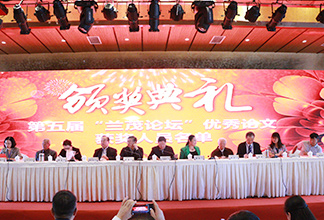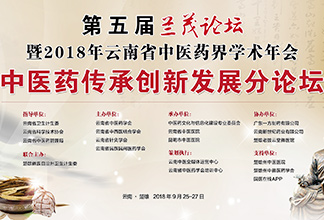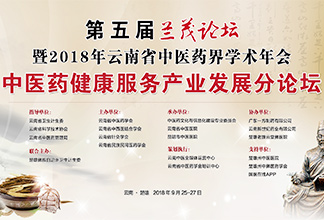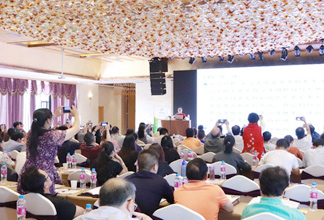3结论与讨论
本实验通过检测灌胃三果汤糖尿病大鼠血清中的GLP-1和GIP的检测结果显示,藏药三果汤可以影响胃肠激素的分泌,灌胃三果汤的糖尿病大鼠血清中GLP-1和GIP相对于模型组都升高,且有统计学意义(P<0.01)。
商品三果片(Triphala)已经被证明可以用于治疗2型糖尿病。Ganeshpurkar [7]等用三果片的水提物来研究对糖酵解酶和蛋白质糖基化的影响发现,三果片水提物可以显著抑制α-淀粉酶活性,同时对α-葡萄糖苷酶抑制率随着提取物浓度增加而增加。Yang[8]等研究表明三果片中成分可增强胰岛素刺激的葡萄糖摄取进入细胞内且不提高前脂肪细胞的分化。Rajan[9]将三果片用于糖尿病患者45天,发现降血糖效果显著。
肠促胰素以葡萄糖浓度依赖性方式促进胰岛β 细胞分泌胰岛素,并减少胰岛α细胞分泌胰高血糖素,从而降低血糖[10]。GLP-1和GIP分别由回肠的L细胞和十二指肠、空肠的K细胞分泌,通过激活某些信号同路来影响胰岛β细胞的分泌,凋亡和增殖[11],同时这两种激素还作用于心、脑、肾、眼睛和神经,以及在肝藏和脂肪中起到一定调节作用[12]。但二者都易被DPP-Ⅳ降解而失去活性,所以二者半衰期通常为2-7min[13]。正常人在进餐后,肠促胰素开始分泌,进而促进胰岛素分泌,以减少餐后血糖的波动。但对于2型糖尿病患者,其“肠促胰素效应”受损,主要表现为进餐后GLP-1浓度升高幅度较正常人有所减小,但其促进胰岛素分泌以及降血糖的作用并无明显受损,而GLP-1在血液中的半衰期较短而且降解的速度过快、合成的费用太贵且给药的途径较麻烦,故使用能够促进GLP-1分泌的药物对于临床具有深远的意义,GLP-1及能促进GLP-1分泌的物质含量升高可以作为2型糖尿病治疗的一个重要目标[14-15]。
藏药三果汤主要成分为天然多酚类化合物,多酚类化合物主要在肠道转化吸收的特点[16]可能参与GLP-1和GIP分泌调节。本次实验结果显示藏药三果汤对大鼠两种激素的影响说明三果汤有治疗糖尿病及其并发症的可能,但是其具体是如何调节此两种激素以及与DPP-Ⅳ是否有关尚未明确,还需要进一步研究。
另外本次实验同时尝试测定了各组大鼠血清中硫氧还蛋白互作蛋白(thioredoxin-interacting protein,TXNIP)的水平,发现灌胃三果汤的糖尿病大鼠血清中TXNIP水平比模型组低,且结果有统计学意义(P<0.01)。
据报道,TXNIP基因的启动子上存在碳水化合物应答元件(carbohydrate response element, ChRE),并可引起胰岛β细胞功能异常及凋亡[17]。TXNIP蛋白是胰岛细胞炎症途径凋亡的核心分子[18],抑制TXNIP的水平有助于降低糖尿病个体体内炎症因子的水平[19],其水平下调也能说明三果汤可能有抑制胰岛细胞凋亡的作用。
总之,测定三果汤对糖尿病大鼠相关胃肠激素的影响,有助于为进一步提高发现民族医药治疗糖尿病的新途径提供一定参考。
参考文献:
[1]龚蕾. 高糖致胰岛微血管内皮细胞凋亡的机制及年龄相关胰岛β细胞再生的研究[D].济南:山东大学医学院,2013:6-76.
[2]杨继家, 张艺, 冀静, 等. 藏医药与印度传统医药对三果汤传统应用及现代研究概述[J]. 世界科学技术-中医药现代化, 2012 (2012 年 01): 1311-1316.
[3]Vadde R,Radhakrishnan S,Reddivari L,et al.Triphala extract suppresses proliferation and induces apoptosis in human colon cancer stem cells via suppressing c-Myc/Cyclin D1 and elevation of Bax/Bcl-2 ratio[J]. BioMed research international, 2015, 2015.
[4]RUSSELL L H, Mazzio E, Badisa R B, et al. Differential cytotoxicity of triphala and its phenolic constituent gallic acid on human prostate cancer LNCap and normal cells[J]. Anticancer research, 2011, 31(11): 3739-3745.
[5]Lu K, Chakroborty D, Sarkar C, et al. Triphala and its active constituent chebulinic acid are natural inhibitors of vascular endothelial growth factor-a mediated angiogenesis[J]. PLoS One, 2012, 7(8): e43934.
[6] Xiong X, Shao W, Jin T. New insight into the mechanisms underlying the function of the incretin hormone glucagon-like peptide-1 in pancreatic β-cells: the involvement of the Wnt signaling pathway effector β-catenin[J]. Islets, 2012, 4(6): 359-365.
[7]Ganeshpurkar A, Jain S, Agarwal S. Experimental studies on glycolytic enzyme inhibitory and antiglycation potential of Triphala[J]. Ayu, 2015, 36(1): 96.
[8]Yang M H, Vasquez Y, Ali Z, et al. Constituents from Terminalia species increase PPARα and PPARγ levels and stimulate glucose uptake without enhancing adipocyte differentiation[J]. Journal of ethnopharmacology, 2013, 149(2): 490-498.
[9]Rajan S S, Antony S. Hypoglycemic effect of triphala on selected non insulin dependent Diabetes mellitus subjects[J]. Ancient science of life, 2008, 27(3): 45.
[10]Edwards K L, Stapleton M, Weis J, et al. An update in incretin-based therapy: a focus on glucagon-like peptide-1 receptor agonists[J]. Diabetes technology & therapeutics, 2012, 14(10): 951-967.
[11] Seino Y, Fukushima M, Yabe D. GIP and GLP‐1, the two incretin hormones: similarities and differences[J]. Journal of diabetes investigation, 2010, 1(1‐2): 8-23.
[12] Seino Y, Yabe D. Glucose‐dependent insulinotropic polypeptide and glucagon‐like peptide‐1: incretin actions beyond the pancreas[J]. Journal of diabetes investigation, 2013, 4(2): 108-130.
[13]李敬华,张红,候雯莉.肠促胰岛素生理作用及应用研究进展[J].武警医学院学报, 2011, 20(7): 597-599.
[14]Yu Y, Hao G, Zhang Q, et al. Berberine induces GLP-1 secretion through activation of bitter taste receptor pathways[J]. Biochemical pharmacology, 2015, 97(2): 173-177.
[15]Zhang Q, Xiao X, Li M, et al. Berberine moderates glucose metabolism through the GnRH-GLP-1 and MAPK pathways in the intestine[J]. BMC complementary and alternative medicine, 2014, 14(1): 188.
[16]滕增辉. 天然多酚类化合物的肠道转运与代谢研究[D]. 第四军医大学, 2007.
[17]Cha-Molstad H,Saxena G,Chen J,et al.Glucose-stimulated expression of Txnip is mediated by carbohydrate response element-binding protein,p300,and histone H4 acetylation in pancreatic beta cells [J].J Biol Chem,2009,284:16898−16905.
[18]Shalev A. Minireview: Thioredoxin-interacting protein: regulation and function in the pancreatic β-cell[J]. Molecular Endocrinology, 2014, 28(8): 1211-1220.
[19]吴平,杜冠华.治疗糖尿病及其血管并发症的潜在新靶点——TXNIP[J].药学学报, 2015, 50(12):1559-1564.
- 上一篇:时空针灸灵龟八法按时取穴治疗脾胃虚弱腹泻型肠易激综合征的临床观察
- 下一篇:没有了



